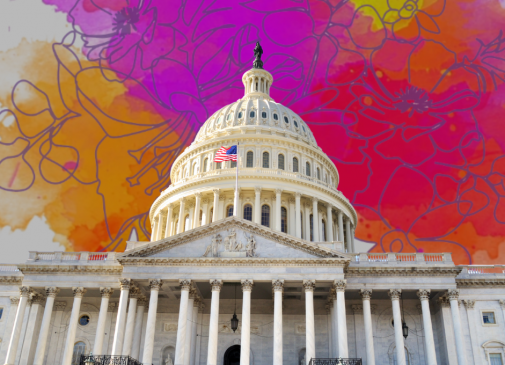
Whether you’ve experiencing painful, heavy periods or have just been diagnosed with uterine fibroids, choosing the right treatment for you can be stressful. Your doctor may have given you pamphlets on hysterectomy or myomectomy, but what if you’re scared about undergoing surgery? Like with any surgery, there are many risks involved with going under the knife.
With over 26 million women impacted by uterine fibroids, it’s shocking that so many of them avoid treatment because they think surgery is their only option. Thankfully, the medical industry has evolved over the years to give women more options when it comes to this common women’s health condition.
What Is Uterine Fibroid Embolization (UFE)?
Uterine Fibroid Embolization (UFE) is a minimally-invasive, outpatient procedure that treats uterine fibroids and can alleviate your fibroid symptoms. There is no hospitalization, stitches, or scarring involved. UFE treatment is a great option for women who suffer from fibroids but don’t want to go through major surgery with a long recovery time. It is also a better option than hysterectomy for women who wish to get pregnant in the future. After UFE, your fibroids will shrink, and your toughest symptoms — from heavy menstruation to chronic abdominal pain — can disappear.
How Does UFE Work?
During your UFE treatment, an interventional radiologist (doctor who specializes in non-surgical treatments) will numb your upper thigh, make a tiny incision, and insert a tiny catheter (less than 1mm in diameter). A real-time x-ray called a fluoroscopy helps guide the catheter into the uterine artery that supplies blood and other nutrients to the fibroid(s). After, small embolic materials are injected through the catheter into the artery. These particles block the blood flow causing your fibroids to shrink over time. Without a steady supply of oxygenated blood, the fibroids begin to die until they are naturally absorbed by your body. The injected embolic agents remain permanently in the blood vessels at the fibroid site; therefore, the likelihood of the same fibroid returning is extremely rare.
Non-surgical treatments like UFE are considered extremely targeted and precise. With that said, only the fibroids are affected, meaning the uterus, ovaries, fallopian tubes, and other surrounding organs are left completely unscathed during treatment.
How Long Is The UFE Treatment?
Unlike surgeries that can take hours to complete, plus a lengthy recovery period in the hospital, patients can expect around a 30 to 45-minute procedure with UFE. Immediately following your treatment, you’ll be able to rest for as long as you need before heading home to complete your recovery. Because most UFE treatments are performed in an outpatient setting, women can recover in the comfort of their home.
Is UFE Right for You?
It’s very important to talk to a fibroid specialist to learn more about non-surgical, outpatient fibroid treatment before making any treatment decisions. UFE is a relatively low-risk procedure compared to fibroid surgeries like hysterectomy or myomectomy.
There are numerous benefits of opting for a nonsurgical treatment like UFE. UFE is an excellent option for women who want to avoid surgery and associated risks. Additionally, people who cannot be put under general anesthesia are also good candidates. Women with multiple fibroids may choose UFE because they can all be treated at once.
Are There Any Risks of UFE Treatment?
Thankfully, UFE has very few risks when compared to surgeries like hysterectomy or myomectomy. However, the biggest risks of UFE include infection or damage to the blood vessel. Your doctor can answer all your questions about the benefits and risks of choosing nonsurgical treatment.
Recovery From UFE vs Surgery
One great benefit of UFE is it allows for a quick recovery. A majority of women who undergo UFE can return to their normal activities within only one to two weeks. On the other hand, recovery from a hysterectomy can take anywhere from six to eight weeks, during which activity is limited.
When Can I Expect Results After UFE?
If you’re considering UFE, you’ll most likely want to know when you can start feeling the treatment results. During UFE, tiny embolic material flows into the artery supplying the fibroid with blood and nutrients. Those embolic agents permanently stay within the artery to block blood flow causing this shrinkage.
Because of this process, it typically takes between two to three months for women to see full symptom relief – shorter and lighter periods, less cramps, etc. During this time period, symptoms should start improving so you can start living your life to its fullest. Additionally, your fibroids will continue to shrink over nine to 12 months following your procedure until they are naturally absorbed by your body.
Benefits of Minimally Invasive Fibroid Treatment
Uterine Fibroid Embolization (UFE) offers a variety of benefits over hysterectomy and other fibroid surgeries, with an approximate success rate of 85 percent. UFE is:
- Non-surgical and minimally invasive
- Lower risk than surgery
- Preserves the uterus
- No post-op stitches
- Retains fertility
- Quick recovery
- Ability to avoid a lengthy, expensive hospital stay
- Performed by fibroid experts
- FDA-approved fibroid treatment
With UFE, the uterus and ovaries remain intact, with a shorter recovery time than hysterectomy. Although UFE is a very safe and successful method of treating fibroids, each woman’s body is different, and every case of fibroids is different. For anyone debating UFE over a hysterectomy, it’s important to be aware of any and all complications that can occur.
Do Health Insurances Cover Uterine Fibroid Embolization?
Yes, they do. Many health insurances, including Medicaid, cover the cost of UFE for the treatment of symptomatic fibroids. Since many UFE treatments are available at outpatient centers, you won’t have to pay for an expensive overnight hospital stay. The Fibroid Fighters Foundation is committed to helping women find affordable UFE treatment that is covered by their insurance provider.
How to Find UFE Treatment
Wherever you are in your fibroid journey, we want to help. If you’re thinking about UFE but need questions answered, give us a call at 855.455.5262 or contact us conveniently online. We can help with getting diagnosed or if you need additional imaging completed, as well as finding a treatment center you can trust.
Share Your Story
If you have uterine fibroids or have undergone fibroid treatment in the past, we want to hear from you. As fibroid fighters, one of our main goals is to raise awareness about uterine fibroids and the alternative treatment options that are available. Their are thousands of women who reluctantly pursue a hysterectomy because they are desperate for relief. We believe that every women has the right to be educated about all of the options that are available to her before she has to lose her uterus.
When you share your story with us, it provides us and our viewers with a valuable resource regarding others experience with fibroids and fibroid treatment. Sharing your experience can help inspire other women to get educated about their condition so that they can make the most informed treatment decisions. Join the Fibroid Fighters and share your story with us to help millions of women find effective, lasting relief from their fibroid symptoms.







